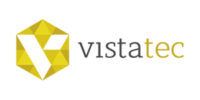How Should You Scale Your Product and Localization Teams?
International expansion is among the most popular growth strategies. 85% of executives cite entering foreign markets as a long-term strategy. Localization plays a vital role in that.
You need a localization strategy that accounts for linguistic and cultural differences in the target market. This type of strategizing involves modifying the product and any accompanying content—including marketing campaigns—to ensure they’re tailored to local preferences and expectations. Each time you expand into a new market or launch a new offering, you must repeat the process. But this can be difficult and time-consuming unless you scale your product and marketing localization teams.
Fortunately, scaling your localization efforts is straightforward. With the right blend of talent, technology, and processes, you can build teams tackling projects of any size. To help you get started, we’ve put together three strategies to grow your localization department.
The Benefits of Separate Product and Localization Teams
You may be wondering if you need different product and localization teams. The short answer is no. However, many companies find it helpful because different types of localization involve other processes and departments. Building separate localization teams can help streamline workflows and ensure efficiency.
Here are five areas to remember as you scale your localization team(s).
Expertise and specialization
Product localization and marketing localization require different skill sets and expertise.
Product localization involves adapting the product or service to fit different markets’ linguistic, cultural, and technical requirements. Engineers, designers, and developers work closely to create a seamless user experience.
Marketing localization, on the other hand, is the process of adapting marketing campaigns, messaging, and materials to resonate with the target audience. It requires a deep understanding of cultural nuances, market trends, and effective communication strategies.
Workflow and coordination
Separating product and marketing localization teams simplifies workflows and improves coordination.
The product localization team can collaborate closely with the product development team to ensure accurate localization. The marketing localization team can collaborate with the marketing and branding teams to develop tailored campaigns.
Time and resource management
Localization projects can be complex and time-consuming. By separating teams, members can focus on their specific tasks without being overwhelmed by overlapping responsibilities. Separating teams helps you optimize resources and meet the deadlines of localized product and marketing materials.
Adaptation to local market needs
Localizing a product involves more than translating it into different languages. It requires understanding the target market’s cultural, legal, and technical requirements.
Product localization teams can conduct market research, gather user feedback, and adapt product features and functionalities. Meanwhile, marketing localization teams can develop strategies to position the product effectively based on local market trends, consumer preferences, and competition.
Quality control and consistency
Separating product and marketing localization teams ensures better quality control and consistency across the business.
The product localization team can ensure that the localized product meets the desired standards by focusing on technical and functional aspects. The marketing localization team can focus on maintaining brand consistency, messaging coherence, and adapting marketing collateral to align with the brand’s image.
Three Strategies for Scaling Your Localization Teams
Now that you know the benefits of building separate localization teams, let’s examine how to scale them. Here are three strategies you can use in concert.
Build a diverse and scalable talent pool
The phrase “you’re only as good as your team” is especially true regarding localization. It requires experts from different fields to work together to create a polished, culturally relevant product or service. Fortunately, that doesn’t mean you need to hire multiple full-time employees immediately. Different localization team models allow you to scale based on your internal resources and budget.
You can:
- Hire a localization company to manage the entire process. You’ll need to appoint a project manager to work with the agency, but this is the simplest way to start.
- Build an in-house localization department that relies on existing teams. You can appoint team members (e.g., software developers, designers, and marketers) to assist with localization projects. Then you can outsource other tasks, such as translation, language quality, and content production, to a localization agency.
- Build a stand-alone localization department in-house. Large organizations with ongoing localization projects often choose this model. It involves completing most or all tasks in-house and requires hiring additional staff focusing only on localization. These in-house departments can still work with external localization companies.
Regardless of the model you choose, a localization team will include the following:
- Project manager who oversees localization.
- Translator who adapts content to the target language.
- Developer who extracts text for localization and reintegrates localized text into products or websites.
- Marketing specialist who conducts market research and provides advice on adjusting your brand to the new locale.
- Designer who adapts your product design for the target market.
- Quality assurance specialist who reviews the localized product and ensures it meets requirements.
For example, let’s say you start by hiring a localization agency. You may rely on them to fulfill all those roles—except for an internal project manager. As your localization efforts grow, you can hire additional consultants or employees to bring more of those roles in-house.
Leverage technology and automation
Localization tools will help you streamline processes, optimize resources, and increase efficiency. At a minimum, your toolbox should include:
- File storage and sharing tools. A localization project may have hundreds or even thousands of files. Create a digital drive or online space for your localization teams to ensure seamless access to shared assets.
- Computer-assisted translation (CAT) tools. CAT tools speed up the translation process by using machine translation to provide suggestions as you translate text. They can be used as stand-alone tools or as part of a translation management system.
- Translation management system (TMS). A TMS automates and streamlines the localization workflow. It includes CAT tools, translation memory, and file storage and sharing tools to speed up the translation process. Some even have additional features, such as team-based platforms allowing online collaboration.
- Bug tracking tools. To ensure your localized website and/or app works correctly, use bug-tracking tools such as BugHerd, Jira, or QA Wolf.
For more tips on how technology can help you scale your localization efforts, check out our blog on tools to set up localization functions.
Streamline localization processes and workflows
There’s no one-size-fits-all workflow for localization projects. Each one has different requirements. However, creating custom workflows is time-consuming and can slow your launch. That’s why you need to develop processes to scale your localization efforts.
You can start by deciding whether you need different processes for different types of content. For example, you may use a continuous localization model to localize user interface (UI) strings because of the small amount of content, frequency of changes, and short turnaround times.
You can also organize workflows by departmental level. For example, Marketing may require a transcreation process to re-write taglines and ad campaigns in each language to better resonate with audiences. Or Legal may need to conduct multiple reviews due to compliance requirements.
You should establish communication channels between stakeholders, including localization, marketing, and product development teams to ensure effective collaboration.
Remember to designate where the final files will be stored. Designating file storage will save time on updates, enable you to launch faster, and avoid costly re-work caused by using the wrong file by mistake.
Scale Your Localization Efforts with Vistatec
In summary, scaling your product and localization teams is vital to succeeding in global markets. By building a diverse talent pool, leveraging technology, and streamlining processes, you’ll reduce time to market, reach a more extensive customer base, and improve cost savings. While that may sound daunting, it doesn’t have to be.
Vistatec provides the solutions you need at every stage of your company’s development. From end-to-end localization to digital marketing and consulting services, we’ve helped many of the world’s most iconic brands accelerate global success.
Ready to kickstart your localization efforts? Contact us today!

